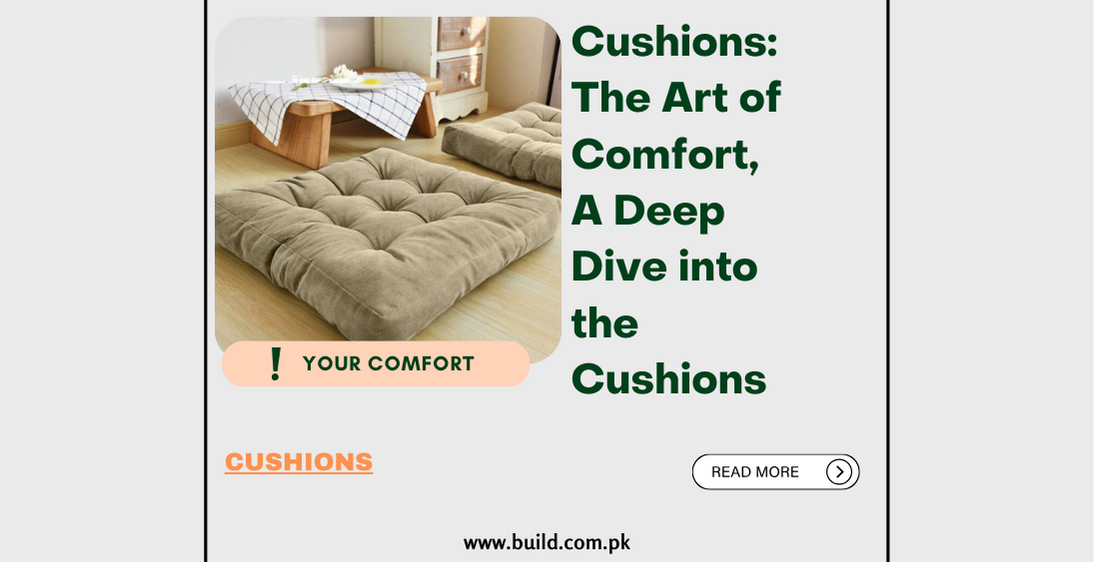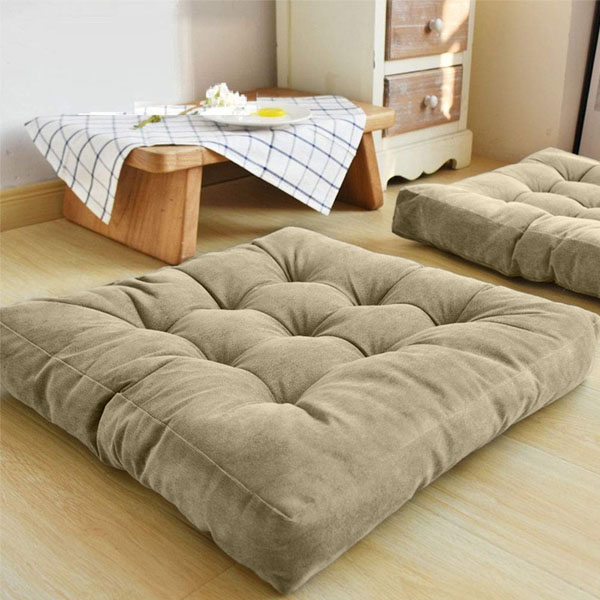Cushions: The Art of Comfort: A Deep Dive into the Cushions

Introduction:
In the realm of interior design and home comfort, cushions
stand as humble yet transformative elements that add a touch of luxury, style,
and, most importantly, comfort to our living spaces. This detailed exploration
takes you on a journey into the world of cushions, unraveling their rich
history, diverse types, materials, styling tips, and the undeniable impact they
have on our daily lives.
Historical Reverie: From Ancients to Modernity:
The history of cushions is intertwined with the evolution of
human comfort n. Dating back to ancient civilizations, cushions were initially
fashioned from rudimentary materials like leaves and animal hides. As time
progressed, cultures around the world developed more sophisticated cushion
designs, incorporating textiles, embroidery, and various fillings. Today,
cushions have become a universal symbol of relaxation and interior aesthetics.

Types of Cushions
Throw Cushions:
A Splash of Decorative Flair: Throw cushions, also known as decorative or accent cushions, serve as artistic elements that enhance the visual appeal of sofas, beds, and chairs. They come in various shapes and sizes, featuring a range of patterns, textures, and colors to complement the overall decor of a space.
Seat Cushions:
Enhancing Comfort and Posture: Seat cushions are designed with a primary focus on comfort and support. Whether placed on dining chairs, office chairs, or outdoor seating, these cushions provide an additional layer of padding, enhancing the sitn ting experience and promoting good posture.
Floor Cushions:
Casual Elegance and Versatility: Floor cushions, characterized by their low profile and often larger size, bring a sense of casual elegance to living spaces. Ideal for creating cozy seating arrangements in lounges or informal settings, floor cushions offer a versatile and laid-back seating solution.
Lumbar Cushions:
Targeted Support for Comfort: Lumbar cushions are specifically designed to provide support to the lower back, making them a popular choice for office chairs, car seats, and even sofas. Their ergonomic design aims to alleviate discomfort and maintain proper spinal alignment.
Bolster Cushions:
Stylish Neck and Head Support: Bolster cushions, characterized by their cylindrical shape, serve both functional and decorative purposes. Placed along the back of a sofa or bed, these cushions offer stylish neck and head support, while their elongated form adds a unique design element.
Materials
Cotton:
Soft and Breathable Comfort: Cotton cushions are prized for their softness and breathability. The natural fibers allow for comfort in various climates, making cotton an ideal material for cushions that come in direct contact with the skin.
Linen:
Elegance with a Relaxed Vibe: Linen cushions bring an air of sophistication with their textured and slightly rustic appearance. Known for their durability, linen cushions often exude a relaxed yet refined aesthetic.
Velvet:
Luxurious Opulence: Velvet cushions add a touch of opulence and luxury to any space. The smooth, plush texture of velvet cushions elevates the overall aesthetic, making them a popular choice for creating a sense of glamour and comfort.
Faux Fur:
Cozy Elegance and Texture: Faux fur cushions provide a luxurious and cozy vibe, br inging warmth and texture to interiors. These cushions mimic the look and feel of real fur, offering an ethical and stylish alternative.
Wool:
Natural Insulation and Softness: Wool cushions are celebrated for their natural insulation properties, providing warmth in colder seasons. The soft and cozy texture of wool adds a comforting element to cushions, making them ideal for creating inviting spaces.
Styling Tips
Mixing Textures: Creating a visually captivating cushion ensemble involves mixing textures. Combining smooth fabrics with textured or patterned cushions adds depth and interest to the arrangement.
Color Coordination: Color coordination is key to a cohesive and aesthetically pleasing cushion display. Choosing a color palette that complements or contrasts with the existing decor ties the look together and enhances the overall visual appeal.
Size and Proportion: Consider the size and proportion of cushions concerning the furniture they adorn. Mixing different sizes creates a balanced and dynamic arrangement, ensuring that the cushions enhance rather than overpower the space.
Seasonal Transitions: Cushions offer an easy and cost-effective way to update the look of a space with the changing seasons. Lighter, brighter cushions can infuse a sense of freshness in spring and summer, while richer, warmer tones contribute to a cozy ambiance in fall and winter.
Caring for Cushions: Proper care is essential to preserve the plushness and longevity of cushions. Regular fluffing, rotating cushions, and following care instructions for specific materials ensure that cushions remain inviting and comfortable over time.
DIY Cushion Covers: For those inclined towards a personal touch, crafting DIY cushi on covers allows for creative expression. Choosing fabrics, patterns, and even adding embellishments can transform basic cushions into unique and personalized decor elements.
Conclusion:
In the symphony of interior design, cushions play a harmonious and comforting tune. From decorative accents to functional support, cushions have transcended their humble origins, becoming essential elements that contribute to the aesthetic an d comfort of our living spaces. As we embrace the plush textures, diverse materials, and styling possibilities of cushions, it becomes clear that these soft accessories are not merely decorative items—they are the comforting embrace that transforms a house into a home.









